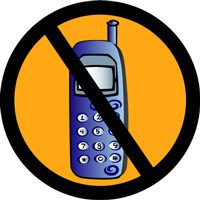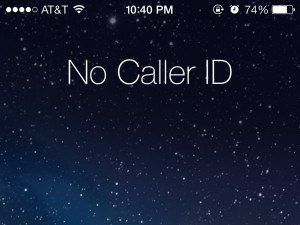We are all, inexorably, becoming dependent on the mobile. It’s a personal device, loaded with personal information, linking us to a digital world, all our data (in the cloud) and a click away from our friends and family. The smartphone is a marvelous invention. However, it has come into our lives with such a voracious speed that it is entirely changing our habits and impacting our relationships. Without having had the chance to adjust our manners, mobile etiquette has been left in the hands (literally) of each user. As a result, there is, increasingly, a risk of social accidents.
Toward a global mobile etiquette
Values and manners differ culturally. Greetings, hand gestures, eye contact, burping, spitting and even tone of voice mean and are accepted differently around the world. Yet, the mobile may be the most obvious physical manifestation of how flat our world is. Maybe it is implausible to create a worldwide standard for everyone; but at the very least, we could establish a “business lounge standard.” I take the example of LinkedIn where there is, more or less, a worldwide accepted way of participating. We all operate on LinkedIn with the same general principles, much as we have a globally accepted behavior in a business lounge. At the very least, what we might agree on is a standard that applies to the business community. Ideally, though, it would be applicable to all mobile users.
I recently created a framework, entitled CREST, in order to set out a standard of mobile etiquette (aka mobile manners): Context, Relationship, Expectations, Settings and Time. Based on this framework, here is a version of what could be a worldwide standard for mobile etiquette. While manners are, by definition, about behavior in the presence of others, I think that any effective set of manners should start with a good personal mobile hygiene.
Below is a preliminary pass, and by no means a definitive set of guidelines, based on 7 different situations.
PERSONAL
(1) Personal usage (when alone)
- First rule: Know and own your settings. Many people still are unaware of some of the useful privacy settings or discrete functions. For example, how simply pushing the on/off button will send an incoming call into voicemail.
- In bed: Don’t keep the phone on / with you while in bed. If you need it for the alarm, for example, then put it in ‘airplane’ mode.
- In the car: While driving, there are loads of legal parameters that keep on getting (appropriately) stricter about the potential distractions of the phone, texting, video games, etc. Whatever the law says, there should be no reading or typing while driving.
- In your ears: Use headsets as much as possible for calls. Be careful not to play music too loudly in your ears for too long (even if the evidence is inconclusive, it can’t be good!).
- Don’t keep the phone in your breast (heart) or trouser (private parts) pocket. {Read about health risks in this 2012 article by Dr Mercola that seems to be quite serious}
PUBLIC PLACES
(2) In public transportation (bus, metro, train)
 Switch phone to vibrate (or off).
Switch phone to vibrate (or off).- Turn off key sounds.
- Speedy conversation: If you must, don’t talk on the phone for longer than 30 seconds (i.e. “I will call you back” or “Just to let you know I will be x minutes late” …). Typically, any such call should be specific and/or task-oriented. Speak with discretion and a lowered voice.
- Listen to any music with a reasonable volume level (not to be heard by neighbors).
- Trains: In trains, following the cue from the Japanese who have a highly developed sense of mobile phone etiquette in public places, it is advisable to get up from your seat and talk in the space between compartments.
- Planes: Since we are presumably on the verge of allowing mobile phone use in all airplanes (as already is the case with Virgin, BA and a few other companies), we will also need to be extremely vigilant about usage onboard, where space is confined. When usage on board becomes commonplace, we will need to come up with a new interpretation for ‘airplane mode.’
(3) Interior public places (e.g. bus stop, airport hall, waiting areas and shops…)
Please note that I entirely welcome the opportunity for people to use their smartphone in stores (showrooming, googling details, mobile payment…).
- Speak with a degree of discretion (e.g. hand over mouth) and with a lowered voice. A good rule of thumb is to be at least 3 meters (9 feet) from anyone else.
- Avoid airing your dirty laundry or, for that matter, important secrets.
- Be mindful of others (i.e. don’t be so self-absorbed that you get in their way).
(4) Exterior public places (e.g. walking in the street)
- First, watch out for your safety (crossing streets, garage exits, etc.). If using music, make sure the volume allows for external sounds to come through (at a minimum: the horn).
- Be truly mindful of others as you walk with your head down, looking at the screen. Bumping into others while walking is, well, highly pedestrian in terms of manners.
- Don’t talk too loudly, especially if people are close and/or walking in the same direction, at the same pace. This acceptable level will depend on the ambient noise.
- If you are accompanying someone else, being on the phone should be limited to urgencies. Sharing music as you walk (i.e. split earphones) is fine as long as it doesn’t obstruct other pedestrians. Solitary listening to music with someone walking beside you should not be allowed.
AT WORK
(5) In company meetings
- Essentially, there should be no calls unless entirely relevant.
- If the phone has to be left on table (which I would discourage), it must be turned face down and be on mute or vibrate.
- Turn off signs and sounds for incoming calls, emails and messages.
- Acceptable exceptions: identification in advance of an important incoming call. In a larger assembly, if a person in the room is not concerned by the ongoing discussion/content, then emailing, tweeting and texting may be done discretely… and, of course, one might question why that person was invited in the first place.
(6) At work in open space
Since open spaces at work are basically becoming the norm, the need for discretion and consideration has become all the more important. Mobile etiquette is a subset of sensible office manners (no mouth-open chewing gum and bubble bursting, noisy fiddling, staring, etc.).
- At the desk, phones should be on mute or vibrate. Key sounds should be turned off.
- Use headsets for calls and music.
- Because the mobile has the property of being mobile, it may be advisable to get up and speak in a dedicated space, especially for sensitive or personal calls.
SOCIAL SETTINGS
(7) Family or friendly outings (e.g. meals)
There are obviously many variations possible and different types of family and friendly outings. The context of the gathering will weigh heavily on the possibilities for using the phone. If it’s more of an intimate or romantic setting, the best place for the mobile phone is out of sight and out of mind. It is scandalous to watch two people on a date where one is on his phone while the other watches on. When both people are simultaneously on the phone, that’s typically a very bad sign, unless perhaps they are checking agendas for the next dinner!
- Devices can be a centerpiece of discussion, creating cohesion: taking and showing photos, sharing musical taste or funny videos. There is also the penchant to google a specific fact for instant gratification. One may also need to consult an agenda or find some data stored in the phone (a number, a name, etc.). According to any pre-established expectations and the nature of the friendships, short usage may be acceptable AS LONG AS the phone is put back out of sight after consultation.
- According to the strength of the relationship, you should focus on the people in your presence.
- Acceptable exception for a call: identification in advance of an important potential incoming call.
Universal don’ts
 Quiet Please: There are many universally “quiet” locations where no smartphone is accepted or acceptable: places of worship, cemeteries, funerals, theatre…
Quiet Please: There are many universally “quiet” locations where no smartphone is accepted or acceptable: places of worship, cemeteries, funerals, theatre…- No Caller ID: When you are with others and receiving an incoming call marked: “No Caller ID,” it is really imperative not to answer. Let voicemail do its work. If you do answer, you are saying to the world around you that you would rather speak to ANYONE else other than the people with whom you are. In which case, you might as well have stayed at home.
The good news is that there are plenty of places and ways to use your mobile phone as you wish (at home, in the wilderness, on your own plane… assuming you have coverage!).
I would be most happy to hear your opinions and reactions! Have I missed out some key situations? Do you agree/disagree with the guidelines?
Further reading:
- Here’s an interesting infographic that describes the mobile phone etiquette by country.
- Twitterquette – etiquette on Twitter














Spot on! I have sent this around the office. My boss is a serial offender on so many counts. He usually has TWO phones face up on the table in meetings, neither of which are on silent and both of which either ring or beep multiple times during any meeting – and he picks the ringing device up each time to check what has come through! It is outrageous.
The combination of the mobile revolution and the (IMO, nightmarish) shift to more open plan offices, has made it impossible to get away from the constant noise of other people’s phones, conversations, music etc. Couple this with the social media revolution, which relentlessly encourages the sharing of anything and everything, and you’re left with a society that is becoming increasingly indiscrete, inconsiderate, narcissistic and bad mannered, not to mention detached from and unaware of what what is going on around us.
Don’t even get me started about people crossing roads or walking through crowded pedestrian areas while staring down at their phones! Or sitting on one’s phone while out at a restaurant for dinner… amazing.
The one thing I’d add to this list is to do with the use of mobile phones at live music events. It has reached a stage (pardon the pun) where people are now holding up iPads at gigs to take their (for the most part I’m sure, awful quality) videos or photo’s. Seriously… how did this become socially acceptable?!
Part of the solution may lie in cell phone crashing. Genius!
http://www.youtube.com/watch?v=rSQxtrKz35k
http://www.youtube.com/watch?v=o9BspJgnw1M
http://www.youtube.com/watch?v=6aLKCDDDrDs